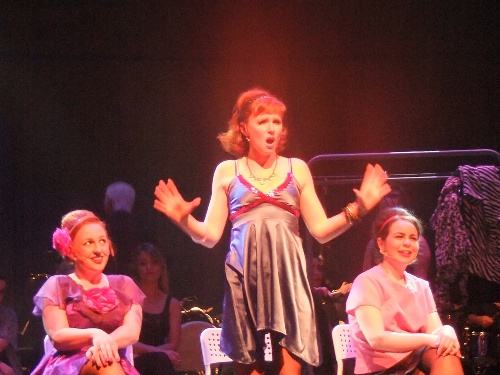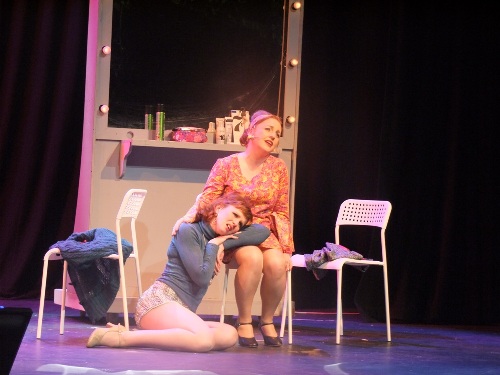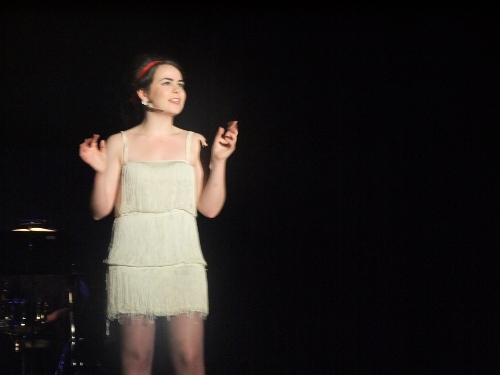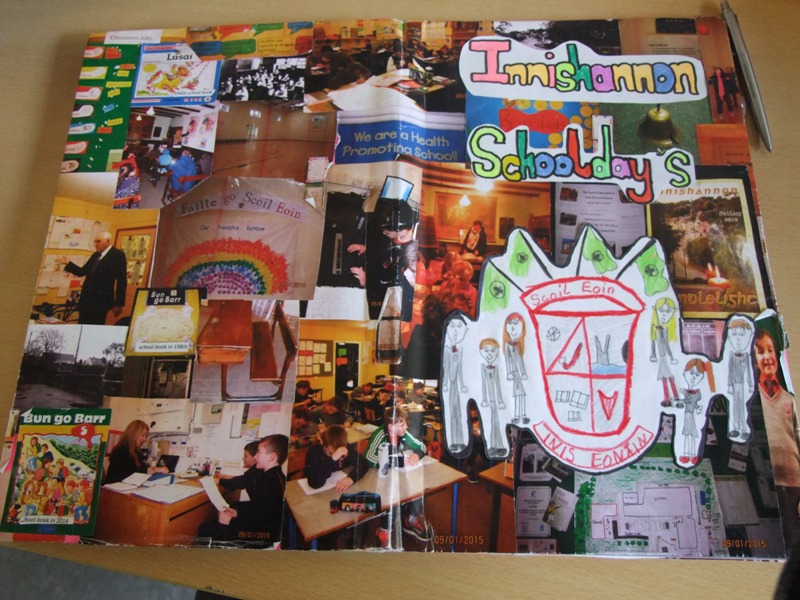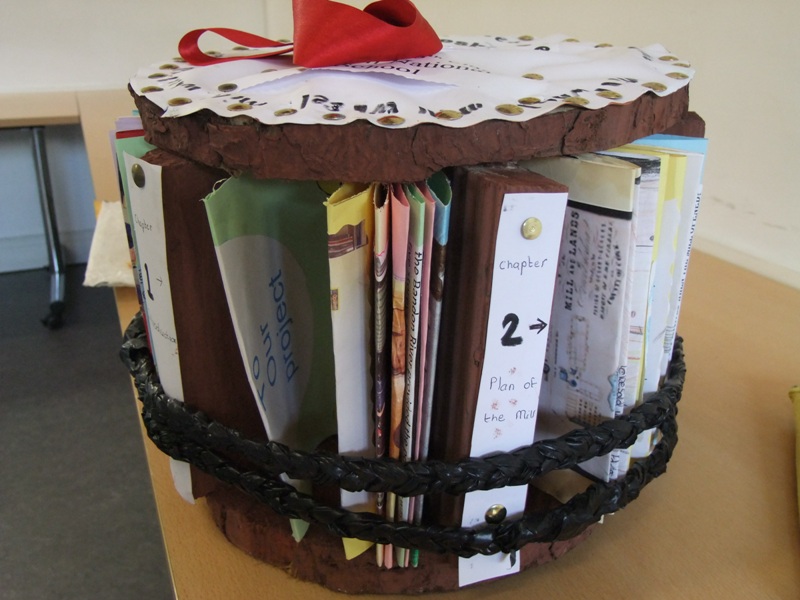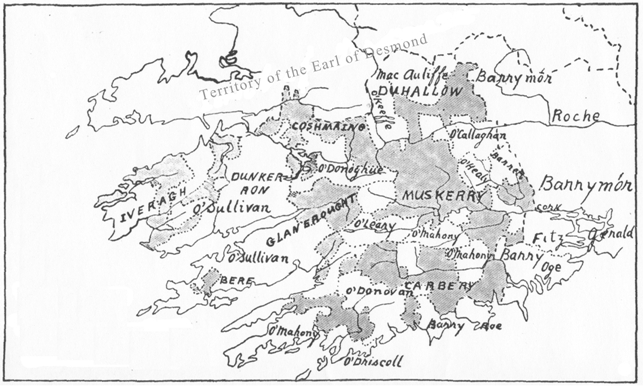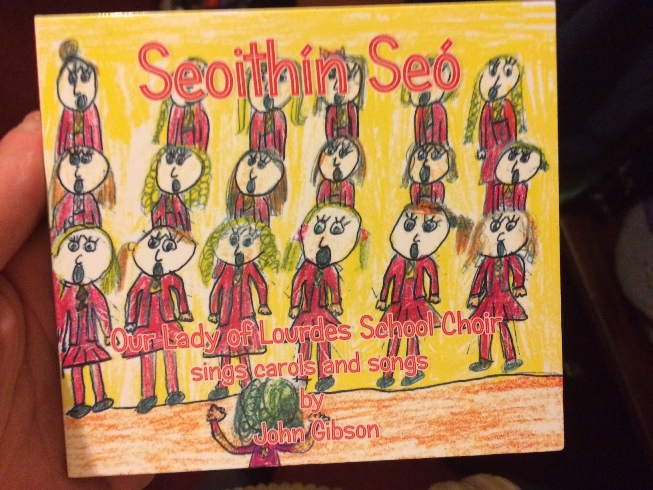Come Along and Support Sweet Charity, 4-7 June, Firkin Crane, Shandon, 8pm, directed by Cllr Kieran McCarthy
Category Archives: Cork City Events
Cllr McCarthy’s Community Talent Competition 2015
Cork’s young people are invited to participate in the seventh year of Cllr Kieran’s McCarthy’s ‘Community Talent Competition’. The auditions will take place on Sunday 10 May 2015 between 10am-5pm in the Lifetime Lab, Lee Road. There are no entry fees and all talents are valid for consideration. The final will be held two weeks later on Saturday 23 May. There are two categories, one for primary school children and one for secondary school students. Winners will be awarded a perpetual trophy and prize money of €150 (two by €150). The project is being organised and funded by Cllr Kieran McCarthy in association with Red Sandstone Varied Productions (RSVP).
Cllr McCarthy noted: “The talent competition is a community initiative. It encourages all young people to develop their talents and creative skills, to push forward with their lives and to embrace their community positively”. Further details can be got from the talent show producer (RSVP), Yvonne Coughlan, 086 8764685 or email rsvpireland@gmail.com.
Kieran’s Comments, Meeting, Boundary Review Committee, 23 March 2015
Meeting, Boundary Review Committee,
Council Chamber, City Hall
Cllr Kieran McCarthy
23 March 2015
Chairman, committee members,
You’re very welcome to our chamber this afternoon.
I think everyone in this room has a grá for Cork and we are all speaking from the same hymn sheet
I wish to bring four points to this significant debate.
(1) The ambitious city:
Firstly, my context in this beautiful city is one of conducting historical walking tours for just over 22 years, 16 years of a weekly heritage column in the Cork Independent and a number of books on this city and region. We are certainly blessed in terms of what this region has to offer the homemaker, business person and visitor.
There is a depth to its story – there is alot to learn from its story – it oozes ambition, vision and a will to succeed to whatever it puts its hand to.
Cork City is unique among other Irish cities in that it alone has experienced all phases of Irish urban development, from c.AD600 to the present day. The settlement at Cork began as a monastic centre in the seventh century, founded by St FinBarre. It served as a Viking port before the Anglo-Normans arrived and created a prosperous walled town; it grew through the influx of English colonists during the sixteenth and seventeenth centuries and suffered the political problems inherent in Irish society at that time;
It was altered significantly through Georgian and Victorian times when reclamation of its marshes became a priority, along with the construction of spacious streets and grand town houses; its quays, docks and warehouses exhibit the impact of the industrial revolution; and in the last one hundred years, Corkonians have witnessed both the growth of extensive suburbs and the rejuvenation of the inner city.
These development threads underpin this city, its depth of character, its cultural DNA needs to be protected and not diluted…the weight of history and its heritage needs to strengthened. The rest of the region has always looked inwards to the city for a myriad of reasons – business, economics, education, sport, artistic endeavours, transportation, processes of migration and emigration – the villages and towns around the region developed because of the offering this city and its estuary had to offer and not the other way around.
Distinctive values and meanings have built up over time in Cork. Personal and cultural identities are entwined with place-making in Cork. In Cork there are strong yearnings by citizens to protect place, to maintain place to aspire in place-making.
There is also an enormous cultural depth within the undulating topography of County Cork and its enormous geography, myriads of colourful town, villages and crossroads – it possesses an enormous 400km in length coastline. Throwing Cork City into this mix of place-making competitiveness with county settlements is not progressive for this city and region.
We are blessed with the Cork we have. It is enormous with so many inter-linked and webs of elements, all difficult to mind with two councils, no mind just the prospect of one over arching institution.
Changing the nature of what Cork is….affects the cultural DNA of us all in this region.
(2) Bottom-Up analysis:
That brings me to my second point, in this debate there also needs to be a bottom-up analysis – it shouldn’t be all be top down – the political spectrum dictating this region’s future. I would encourage continued consultation with the general public on the impact of this boundary review. This process should not be rushed. It should not become a highly political process.
Certainly, decisions should not be made on a whim of the concept of political efficiency. Both Cork City and County Councils have seen what efficiency has done in the last 3-4 years as the claws of cutbacks are consistently scratching at the eyes of ideas of ambition and potential in this region and elsewhere.
(3) Building a future for our city:
This leads me to my third point the need for a strong focus on the city’s future. Our executive gave you a detailed look at what this city has achieved under enormous recessional pressures. The city is consistently batting above its weight despite the lack of development of gateway targets by government and needs to stay focussed. The city is on top of its game and with further finance, beyond the property tax receipts has the potential to ignite its city centre strategy and its docklands area.
The City is on the verge of achieving great projects such as its Cork Docklands area and Cork City Centre Strategy- it has a vision – strategies for the branding, renewal and regeneration of Cork City Centre and constructing a new suburb and industrial hub in its Docklands. These projects construct a strong core and nationally counter balance the capital’s bias in urban development. These projects don’t fit into the box of political efficiency but are about forging a strong and secure future for Ireland’s second city. This city doesn’t need to be a pawn in the game of efficiency.
Indeed, I don’t see the boundary process as one of achieving efficiency but one of dilution – the question of merging Councils will lead to dilution. Cork’s future projects run the risk of competing with other important projects in County Cork’s enormous regions – the city runs the risk of dilution of improving city governance, the dilution of key urban infrastructure priorities, the dilution of social cohesion and the dilution of many more multi-complex webs of development strategies for our city. The cost savings would be minimal – No mind the dilution of services such as housing, roads, arts, wastewater, park management, heritage – the list is endless. The city’s collection of property tax is just about balancing, what we got through the local government fund last year versus what we got through the property tax this year. Going forward to compete, the city must attain more development levies to progress its various multifaceted projects and not be over bogged down in a game of economies of scale. As a council we left the word efficiency on the recessionary road about 3 years ago, we are now on a road of survival of the fittest.
(4) The Frankenstein Council:
That leads me to my fourth point – that in the quest for efficiency, what would be created is a Frankenstein of a council – a possible council of 86 heads from different backgrounds, parties and non-parties. Efficiency would not pervade the Council chamber but the very opposite.
An unworkable political battlefield if ever would be created. The reserved decision making process of the Council would grind to an almost halt on every issue.
Efficiency at the cold face of representation will be a longer process. Meetings will be longer, the emphasis on the county with its larger geography will be acute. Democratic representation would be imbalanced.
Conclusion:
To conclude, I wish the committee to focus on my four points:
- Changing the nature of what Cork is….affects the cultural DNA of us all in this region.
- decisions should not be made on a whim of the concept of political efficiency.
- This city should not be a pawn in the game of efficiency but should be allowed to realise its ambition and vision.
- Efficiency will not pervade the Council chamber and its reserved functions but the very opposite.
Overall efficiency will become a chameleon of sorts, which will carve a route into the lives of every citizens in our great city and great county, not strengthening much but creating thinly layered foundations of an efficiency construct, promising much but one that doesn’t serve anyone effectively. Thank you for your time.
Kieran’s Talks, Lifelong Learning Festival Week
The 12th Cork Lifelong Learning Festival will take place from Monday March 23 to Sunday 29 March, 2015. Cork’s Lifelong Learning Festival promotes and celebrates learning of all kinds, across all ages, interests and abilities, from pre-school to post retirement. The festival’s motto is Investigate, Participate, Celebrate, and the public can do that by watching demonstrations, trying out skills, and seeing others, from the young to the old, show off what they are learning. Since it started in 2004, it has grown from 65 to about 500 different events. During festival week all events are free and everyone is welcome.
For the Lifelong Learning Festival Week, Cllr Kieran McCarthy will give a talk on Cork Harbour through old postcards at the meeting room of the Church of the Real Presence, Curaheen on Wednesday 25 March, 2.30pm. He will also give a talk on Cork in the 1920s and 1930s in the Cork City and County Archives in Blackpool at 2.30pm on Friday 27 March (all free, all welcome).
Kieran’s Our City, Our Town, 19 March 2015
Kieran’s Our City, Our County Article,
Cork Independent, 19 March 2015
Heritage Awards for Cork Schools 2015
This year marks the twelfth year of the Discover Cork: Schools’ Heritage Project, which is co-ordinated by myself. This year’s Project culminates with an award ceremony on Friday 20 March for best projects for city-based schools. The Project is open to schools in Cork City and County – at primary level to the pupils of fourth, fifth and sixth class and at post-primary from first to sixth years. A total of 48 schools in Cork (city and county) took part this year. Circa 1550 students participated in the process and approx 220 projects were submitted on all aspects of Cork’s history.
The subject of local history for many is spoken about at the dinner table in a sense every day as the lives of past family relatives are recounted. Hence the emphasis in the schools is on the personal engagement with the project, what can the student bring to the interpretation of a topic and vice versa, what’s within the topic that can inspire the student to think about it in a different way? Students are challenged to devise methodologies that provide interesting ways to approach the study of their local history. Submitted projects must be colourful, creative, have personal opinion, imagination and gain publicity. In particular students are encouraged to attain primary material through engaging with a number of methods such as fieldwork, interviews with local people, making models, photographing, cartoon creating, making DVDs of their area.
Students are to experiment with the overall design and plan of their projects. Much of the work could be published as local heritage / history guides to people and places in the region. For example a winning class project this year focussed on the aspect of Cork, now and then. They mapped out several changes to Cork’s built heritage using old postcards and interviewing older people. Students are encouraged to compare and connect the past to their present and their immediate future. Work needs to involve re-imagining what life may have been like. One of the key foundations in the Project is about developing empathy for the past– to think about attitudes and experience in the past. Interpretation is also empowering for the student- all the time developing a better sense of the different ways in which people engage with and express a sense of place and time.
Every year marks go towards making a short film or a model on projects to accompany history booklets. Submitted DVDs this year had interviews of family members to local historians to the student taking a reporter type stance on their work. Some students also chose to act out scenes from the past. Another group created a short film on University College Cork and Fota House.
The creativity section also encourages model making. The best model trophy in general goes to the creative and realistic model. This year the best model in the city went to a model of St Anne’s Church, Shandon, complimented by Westminster. The project told the story of the rise of the career of eminent painter Daniel Maclise. In the county, the top model prize went to students from St Columba’s Girls National School who re-created different monuments in their area such as the beautiful 200-year old St Columba’s Church and the fingerpost complete with paper mache flowers.
Every year, the students involved produce a section in their project books showing how they communicated their work to the wider community. It is about reaching out and gaining public praise for the student but also appraisal and further ideas. Some class projects were presented in nursing homes to engage the older generation and to attain further memories from participants. Students were also successful in putting work on local parish newsletters, newspapers and local radio stations and also presenting work in local libraries. This year the most prominent source of gaining publicity was inviting parents and grandparents into the classroom for an open day for viewing projects or putting displays on in local community centres and libraries.
Overall, the Discover Cork: Schools’ Heritage Project attempts to provide the student with a hands-on and interactive activity that is all about learning not only about your local area but also about the process of learning by participating students. The project in the city is kindly funded by Cork Civic Trust (viz the help of John X Miller), Cork City Council (viz the help of Heritage Officer Niamh Twomey), the Heritage Council. Prizes are also provided in the 2015 season by Lifetime Lab, Lee Road (thanks to Meryvn Horgan), Seán Kelly of Lucky Meadows Equestrian Centre Watergrasshill and Cork City Gaol Heritage Centre. The county section is funded by myself and students. A full list of winners, topics and pictures of some of the project pages for 2015 can be viewed at www.corkheritage.ie and on facebook on Cork: Our City, Our Town. For those doing research, www.corkheritage.ie has also a number of resources listed to help with source work.
For the Lifelong Learning Festival Week, I will give a talk on Cork Harbour through old postcards at the meeting room of Church the Real Presence, on Wednesday 25 March, 2.30pm. I will also give a talk on Cork in the 1920s and 1930s in the Cork City and County Archives in Blackpool at 2.30pm on Friday 27 March (all free, all welcome).
Caption:
784a. Page from a project on Innishannon National School history from students of fourth class, Innishannon NS (picture: Kieran McCarthy)
784b. Creative project book holder in the shape of the old Farnashesheree Grain Mill, Bandon from students of Ahiohill NS, Bandon (picture: Kieran McCarthy)
Kieran’s Talks, LIfelong Learning Festival Week
For the Lifelong Learning Festival Week, I will give a talk on Cork Harbour through old postcards at the meeting room of Church the Real Presence, on Wednesday 25 March, 10.30am. I will also give a talk on Cork in the 1920s and 1930s in the Cork City and County Archives in Blackpool at 2.30pm on Friday 27 March (all free, all welcome).
Kieran’s Our City, Our Town, 5 March 2015
Kieran’s Our City, Our Town Article
Cork Independent, 5 March 2015
Cork Harbour Memories (Part 13)
– Fifteenth Century Change in Munster
Henry VII’s charter of 1500 to Cork recognised the potential of the harbour and the idea of possessing it as a territory. However by this year, the old Anglo-Norman feudal manors were collapsing, and even the great Earl of Desmond territory that replaced them was dissipating. The English interest in Munster was much weakened by the Wars of the Roses in England – and Irish clans took back many English castles and territories in Cork and Kerry. The fifteenth century brought civil unrest and geographical and cultural change as new owners emerged over the land holdings of County Cork.
The Anglo-Norman conquest of Ireland diminished the ancient Gaelic kingdom of Desmond in size to the present County Cork and south County Kerry, the MacCarthys being compelled into the southwest of Munster where they ruled as MacCarthy Mór. Desmond (Des-Mumha) had encompassed southern Munster and included within its boundaries the greater part of present-day counties Limerick, Kerry, Cork and Waterford.
The rise of the English Earls of Desmond had their origins in 1169AD when Maurice FitzGerald from Wales came to Ireland with the Anglo-Normans. Many scholars have written about the family history of the Fitzgeralds. Burke’s Genealogical and Heraldic History of the Landed Gentry in Britain and Ireland, published in the early nineteenth century, reveals that over eight centuries the Fitzgerald family became one of the most powerful with numerous branches in Ireland. The Fitzgeralds were initially located in Counties Kerry and Kildare. A walk through Tralee town centre and glancing at its historical plaques reveal that a castle was built at Tralee circa 1243 by John FitzThomas FitzGerald. It became the centre of Geraldine power (the House of FitzGerald) in Munster for over 400 years. John’s great grandson son, Maurice FitzThomas or FitzGerald (d.1356), inherited vast estates in Munster and was created 1st Earl of Desmond (South Munster) on 22 August 1329 by King Edward III. Maurice was Captain of Desmond Castle in Kinsale (an earlier structure to what is there now), so-called ruler of Munster, and for a short time Lord Justice of Ireland. He led a rebellion against the Crown, and was suspected of aspiring to make himself King of Ireland, but he was ultimately restored to favour.
In time, the Fitzgerald family began to amass vast tracts of land in Kerry, North Cork, Limerick, Waterford and Tipperary. In particular, they became very powerful and claimed ascendancy over native Irish lordships such as MacCarthy Mór. Between the years 1329 and 1601, sixteen Fitzgeralds held the title ‘Earl of Desmond’. They were estimated to have owned one million acres of land. One of the nearest territories to the walled town of Cork was within the Cork Harbour region. On 12 June 1438, Robert FitzGeoffrey Cogan granted all his lands in Ireland (being half the old Kingdom of Cork) to James, Earl of Desmond. The heart of these lands was in the western section of Cork Harbour taking in the Carrigaline and Douglas region and westwards to Castlemore in Ovens and beyond.
Jarring against the Geraldine narrative of expansion, the MacCarthy Mórs, the ancient Kings of Desmond, also held extensive demesne lands scattered throughout the counties of Cork and Kerry. Burke’s Genealogical and Heraldic History details that their principal seats in Kerry were at Pallis Castle, near present-day Killarney, Castle Lough, on the shore of Killarney’s Lough Leane, and Ballycarbery Castle, near present-day Caherciveen.
As well as the royal sept of MacCarthy Mór (nominal head of all the MacCarthys, and who dominated in south Kerry), there were three other related but distinct branches. MacCarthy Reagh or Riabhach (‘grey’) was based in the Barony of Carbery in southwest Cork; their principal seats were at Kilbrittain Castle, as well as Timoleague Castle. The Duhallow (MacDonough) MacCarthys controlled northwest Cork. Their principal seat was at Kanturk. MacCarthy Muskerry was on the Cork/Kerry border. Over the years of the MacCarthy Mór rule in Desmond, there were a number of sub-septs created for non-successional sons of the King. All these families, slowly but surely, encroached on English lands and secured them for themselves.
Dermod Mór MacCarthy, a son of Cormac MacCarthy Mór, of the main line was born in the year 1310. In 1353 he was acknowledged and created the first Lord of Muskerry by the English administration. The lands passed down to the ninth Lord of Muskerry, Cormac McTeige MacCarthy Láidir, who succeeded in 1449. He was a great builder and financed the construction of the third (and present day) Blarney Castle, Carrignamuck in Dripsey and Kilcrea in Ovens. All are significant structures in their own way. These tower houses all marked access routes across undulating topography and in areas of tributary rivers. It was also the custom for the Lords of English lands to place some relative in each of their castles. Cormac Láidir’s own brother Eoghan, the chosen relative, was stationed at Carrignamuck. Being only just kilometres from the walled town of Cork, the MacCarthys had a significant role to play in playing political power games in the region, and knowing the potential of taxing goods travelling through their lands bound for export and offering security for the English administration.
To be continued…
Kieran’s new book, Cork Harbour Through Time (with Dan Breen) is now available in Cork bookshops.
Caption:
782a. Map adapted from W F Butler, 1920, Pedigree and Succession of the House of MacCarthy Mór, With a Map, Journal of the Royal Society of Antiquaries of Ireland, vol. 51, p.33; it shows the extent of McCarthy lands taken from Anglo Norman families such as the DeCogans and the Barretts.
782b. Ramparts of Blarney Castle, present day and the kissing of the stone (picture: Kieran McCarthy).
Cork City Council Twinning Grants, 2015
Cork City Council has an open call for providing grants to Cork city based groups who are willing to pursue activities to promote the twinning links between any of the twinned cities subject to certain conditions. Cork city is twinned with 6 cities, Cologne, Germany, Coventry, United Kingdom, Rennes, France, San Francisco, U.S.A., Swansea, Wales and Shanghai, China.
Twinning committee member Cllr Kieran McCarthy noted “The twinning grant scheme is an ideal source of funding to get ideas off the ground and connect Cork people to other cities of international importance. The nature of the activity may be community based, voluntary, social, business, cultural, educational, sporting or of general social and economic benefit”.
An activity which is likely to develop and deepen links and generate new contacts with a twinned city will be given extra consideration. The twinning activity may involve travelling to a twinned city but travel is not a pre-requisite for awarding a grant. The maximum grant awarded is 50 percent of what is proposed. All applications must be supported by detailed programmes and financial projections. Application forms, together with the conditions applying, are available from the Reception Desk, Cork City Council, City Hall, Cork. Closing date for receipt of applications is 5p.m on Friday, 27th February 2015.
Christmas CD, Our Lady of Lourdes NS, Ballinlough
Our Lady of Lourdes National School,
School Choir Cd, 2 December 2014,
Speech, Cllr Kieran McCarthy
“The Music Box”
Well done on a really cool and thought provoking cd – John Gibson and the girls have done an amazing job in bringing this project together. What is before us this evening is soothing music crafted by great teamwork between John and the girls. Music has immense power to stop people, fire their imagination, encourage wonder, inspire confidence, motivate people, make people ask questions, and even put people on another track.
Listening to the songs, there is a great sense of journeying in them.
Music Box
The first piece is called Music Box – A box is always an intriguing object, at Christmas time, it’s bound to be full of surprises, which this cd imparts
The piece is about the opening of one of those old magical, spell like and hypnotic music boxes – the music is a reminder of something special found on an old dresser with a smaller mirror and a box full of random objects such as pins, necklaces, combs and pieces of memories like old photos – both the pins and the other objects and the memories hold the world together, to keep us together in a world where there are many random objects and memories to stop us in our tracks.
Track two is called The Light of the World
Track two is called The Light of the World. And on the path of this cd we’re met with the idea of Christ as a lighthouse, whose rays we are all encouraged to embrace. In the song, there are wider ideas as play, the sense of freedom, not to be imprisoned by life, to raise ourselves and others up, the lonely, the orphan, the widow. We have all the potential to be great lighthouses, lighting up paths around us, and each one of us have different talents and different lighthouse shapes, casting different and important lights.
Christmas Carol
The third piece we are brought to a stable to a beautiful Irish piece entitled Christmas Carol – and yep it’s about Baby Jesus in a crib – a story that has crossed centuries, a truth held in many people’s hearts – the story of two proud parents with their new born baby – in that stable they were alone for a time, worried about the health of the child, worried by the politics of the day and probably worried were they doing the right thing – yes there was the unknown but for all that they loved without question that baby boy…for you, parents here this evening, you worry, about many aspect of your children’s lives but you love without question. So perhaps the song calls for more people to love, full stop, love without questioning.
The Lord is my Shepherd
The fourth piece brings us to a valley I think – it is entitled, The Lord is my shepherd, based on that very old but well known psalm, we are presented with many images, one is about travelling in a dark valley seeking leadership, seeking fresh pastures, we need to be comforted, we are thirsty, our drooping spirit needs to be revived, our cup of goodness and righteousness needs topping up. The song keeps coming back to the idea of seeking out what is good for the soul and that we constantly travel that road.
Lullaby Baby
The fifth piece perhaps brings us to a rocking chair where we are met with the rocking and lullabying of a small baby to sleep– we are met with images of calmness, peace, and love and of a child – perhaps after a manic day of tearing around – I think pieces 7 and eight lead us back to a space beyond the lullaby – Christmas Lullaby and Codladh Samh leads us to a dreamworld – a space of endless possibilities, where anything is possible – maybe we all need to dream, find quietness in our lives, to reflect on the most important things in life.
Memorare
The sixth piece brings us to Memorare – John’s work, Mrs Holland’s excellent piano playing invoke the image on going for long walks in the streets – this well known prayer about seeking protection from the Virgin Mary has many key words running through it. The piece opens with the wod “’remember”, an action can make you stand tall or reduce you to tears, such is the power of remembering – the song calls for clemency, its asks for help, it acknowledges faults and failings; this song encourage the listener to look at those around them, that we are not alone in our struggles but sometimes a walk does offer some solice.
Sleigh Bell
Perhaps the last piece Sleigh Bell leads us to this school – the composition has that feeling yes of a sleighing but also the busyness of this school – how anytime you walk through the door you are blown away by the artwork on the walls, the whispers and loud noises behind the classroom doors, the determination and energy of the staff here, the leadership of Mrs Lucey, the passion of John Gibson in this project, the enthusiasm of the pupils, the concerns and love of parents and the parents council. We are very lucky to have such energy in our community. In a way this school is one big music box, full of the most random things and memories,
May your new cd make people stop, fire their imagination, encourage wonder, inspire people, motivate people, make people ask questions, and even put people on another track.
I look forward to hearing the live version here shortly, I’m delighted to be able to officially launch it, Best of luck with and thanks for inspiring us all.
Ends
CDs available from the schoool office at E5.
Kieran’s Our City, Our Town, 9 October 2014

Kieran’s Our City, Our Town Article, 9 October 2014
150 Years of The Statue
To honour such a man is to do honour to ourselves, to your country, and to the Irish name. It is now my pleasing duty, in the names of the citizens of Cork to unveil the statue, which is to stand henceforth in your city, as an enduring memorial of its best and greatest citizen, and to present to the gaze of those whom he loved and served in life, the semblance of those features, which are so familiar to their memories and dear to their hearts (John Francis Maguire, Mayor of Cork, 10 October 1864).
The date 10 October 2014 marks the 150th anniversary of the unveiling of the Fr Mathew Statue on St Patrick’s Street. Enshrined in Cork City’s collective memory as the ‘Apostle of Temperance’, by the end of 1840, it is recorded that 180,000 to 200,000 nationwide had taken Fr Mathew’s pledge. In the late 1840s, Fr Mathew went to America to rally support for his teetotaller cause and the teetotalism cause in Ireland and England started to suffer by his absence. He died in December 1856 and was buried in St Joseph’s cemetery, Cork, his own cemetery that he created for the poor. Fr Mathew has left a legacy in this city that has been maintained and respected since his death. Of all his commemorative features in the city, the Fr Mathew Statue, erected in 1864, on the city’s St. Patrick’s Street very much honours the man.
Soon after the death of Fr Mathew in December 1856, a committee was formed for the purpose of erecting a suitable memorial in the city. The commission was entrusted to the famous sculptor John Hogan who in his early days had been raised in Cove Street and was acquainted with Fr Mathew. Hogan died in 1858 and on his death a meeting of the committee was called. It was reported that they had on hand the sum of £900, and on the motion of John Francis Maguire MP, it was agreed to give £100 to the Hogan family in recognition of what Hogan had already done on the contract. The sculptor’s eldest son, John Valentine endeavoured to carry out his father’s work and in June 1858 another meeting of the community was held at the Athenaeum to inspect a model of a statue he brought to Cork.
However the commission was handed over to John Henry Foley. He was the second son of Jesse Foley, a native of Winchester, who had settled in Dublin. When John had reached the age of 13 he decided to follow his eldest brother in the profession of sculptor. He entered the school of the Royal Dublin Society where he soon distinguished himself by winning many prizes for drawing and modelling. In 1823 he won the major award of that school. This success induced him to follow his brother to London where he joined the schools of the Royal Academy. Within a short time he submitted a study entitled “The death of Abel”, which won for him a ten year scholarship to that establishment. Foley’s next noteworthy achievement was exhibiting in the Royal Academy in 1839, and 10 years later he was elected a full member carrying the letters R A after his name. At 40 years of age the sculptor had achieved the highest honours. Foley’s output was prodigious and his works are to be found in India, USA, Ceylon, Ireland and Scotland. His subjects were deemed classical and imaginative, creating equestrian statues, monuments and portrait busts. Two years after the unveiling of Fr Mathew statue, his Daniel O’Connell monument in Dublin was unveiled.
The Fr Mathew Statue was unveiled on 10 October 1864 amidst a concourse of people and public celebration. Both the Cork Constitution and Cork Examiner the following day carried lengthy and vivid accounts of the pomp and ceremony. The statue had been cast in the bronze foundry of Mr Prince, Union Street, Southwark, London. As well as obtaining a remarkable likeness of Fr Mathew, the sculptor posed the figure as a representation of him in the act of blessing those who had just taken the pledge. On the statue’s arrival in Cork, it was placed on the stone pedestal which had been designed by a local architect William Atkins.
The proceedings on that 10 October began at 12 noon when it was estimated that thousands of people lined all the vantage points on the city’s streets. All businesses had been suspended for the day and public buildings and private houses were decorated for the occasion. The city remained thronged with people from 10am to 4pm. A huge procession had assembled on Albert Quay and the Park Road and moved off at 12noon headed by the Globe Lane Temperance Society of 50 members and 12 performers in their band. All the trades, societies with their banners, sashes and coloured rosettes marched with Temperance Societies from all over the county. At 2pm the statue was unveiled to a mass of public support. Henceforth it was immortalised as a landmark, defining the centre of the city and supporting the story and folklore of Fr Mathew on the great St Patrick’s Street.
Caption:
763a. Fr Mathew Statue, as depicted in the Illustrated London News, 26 December 1863, p.665



